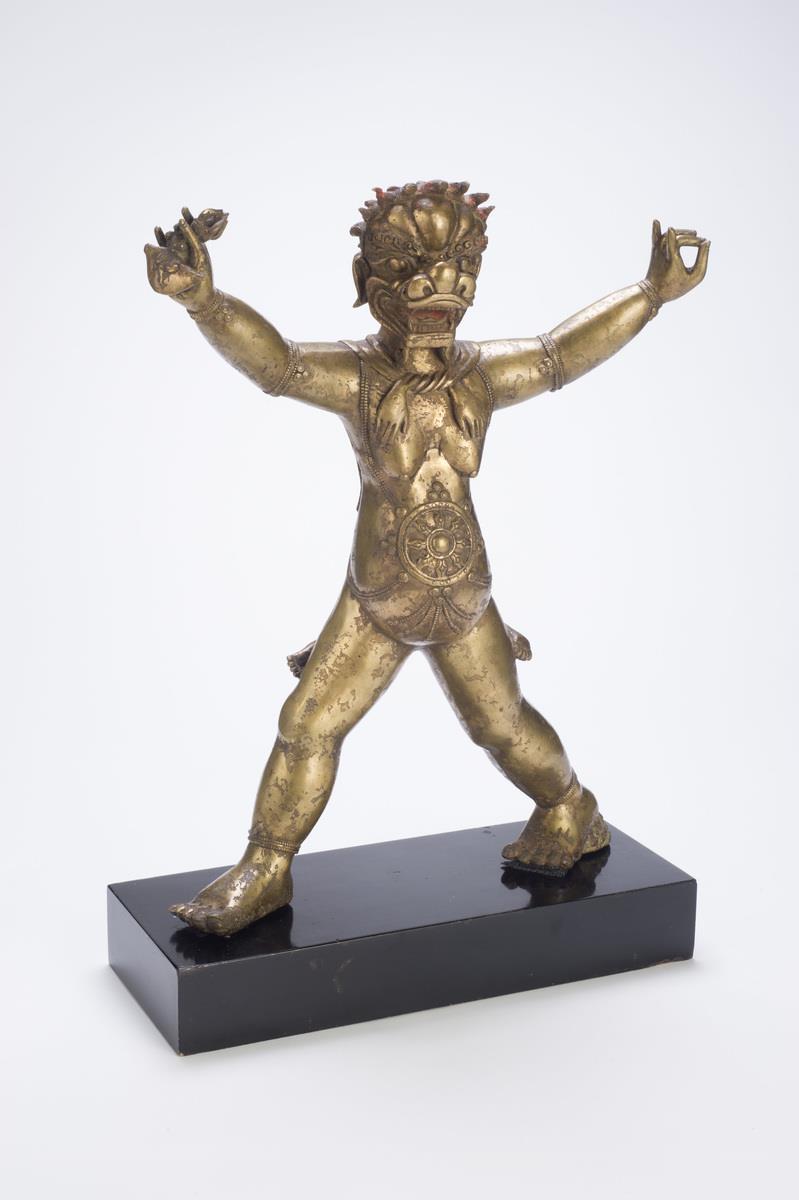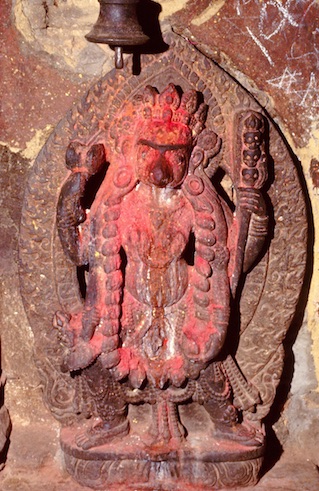
Late 18th century, Mongolia, Dolonnor, Ushnishavijaya, parcel-gilt bronze repoussé with polychromy, 18,1 cm, private collection, photo on Christie’s
The ‘Victorious Goddess of the Ushnisha’ in her three-head and eight-arm form, holding a lasso in her main right hand and an arrow in the middle one, her missing attributes are a visvajra (main left hand) a bow (middle left hand), a long-life vase (lower left hand), an effigy of Amitabha (upper right hand). he left one makes the fear-allaying gesture, her lower right hand is held in the gesture of supreme generosity, the left one once held a long-life vase.
And to continue with late but interesting works from The Triay Collection of Himalayan Art on Bonhams :
This female figure with a demon appearance may be a rakshasi, as suggested by Jing Wen from Bonhams. We saw a couple kept at the British Museum (erroneously labelled ‘Vajrayogini and Karmadakini‘ – see detailed notes on HAR ). The above is naked and holds a thigh bone and a skull cup.
Standing with her left foot on a female victim, the lion-faced dakini brandishes a flaying knife and holds a skull cup full of blood before her heart and a long ritual staff in the crook of her left arm. She wears a tiger skin around her waist, another on her back, and is adorned with a skull crown and a garland of severed heads.










































